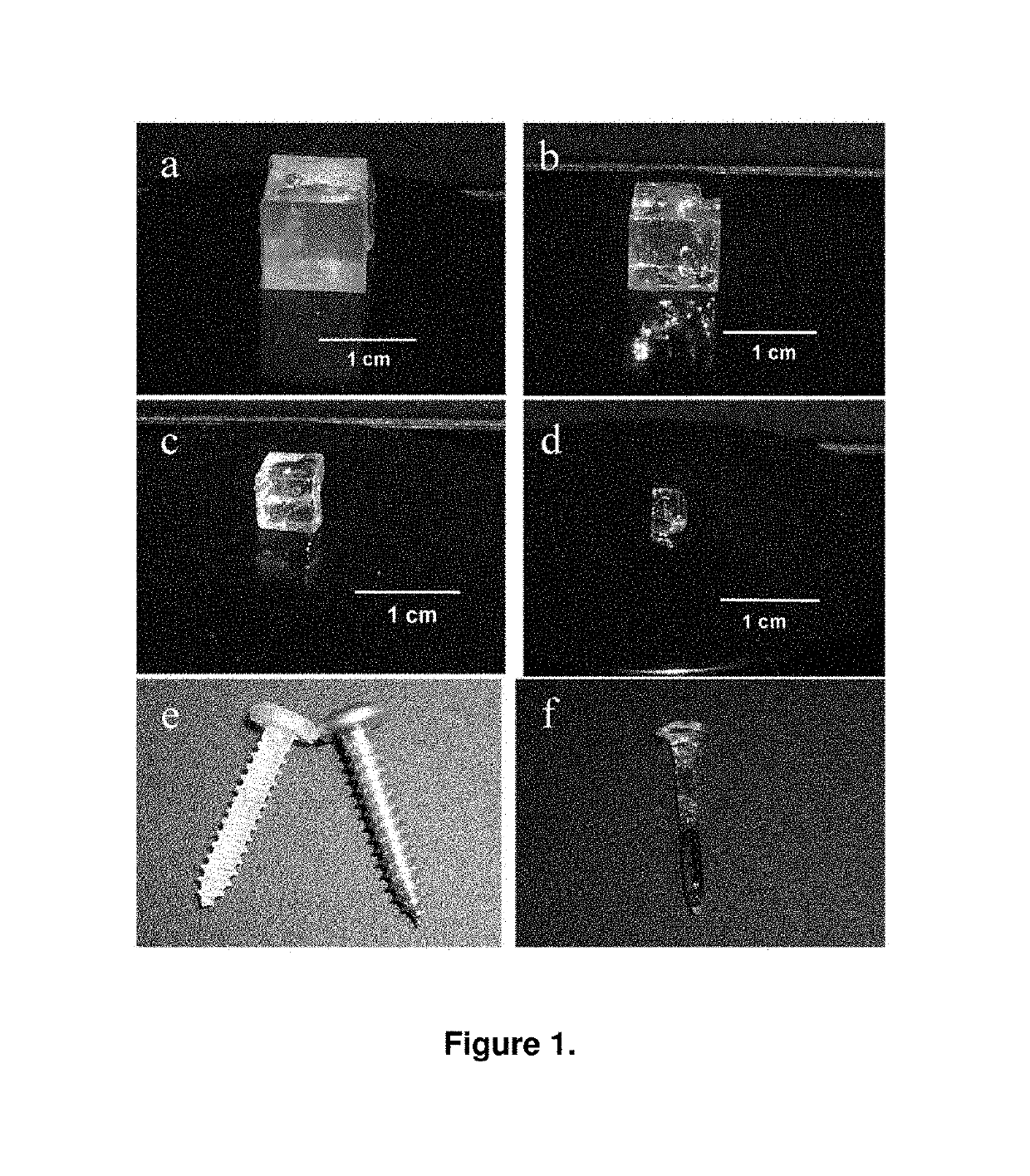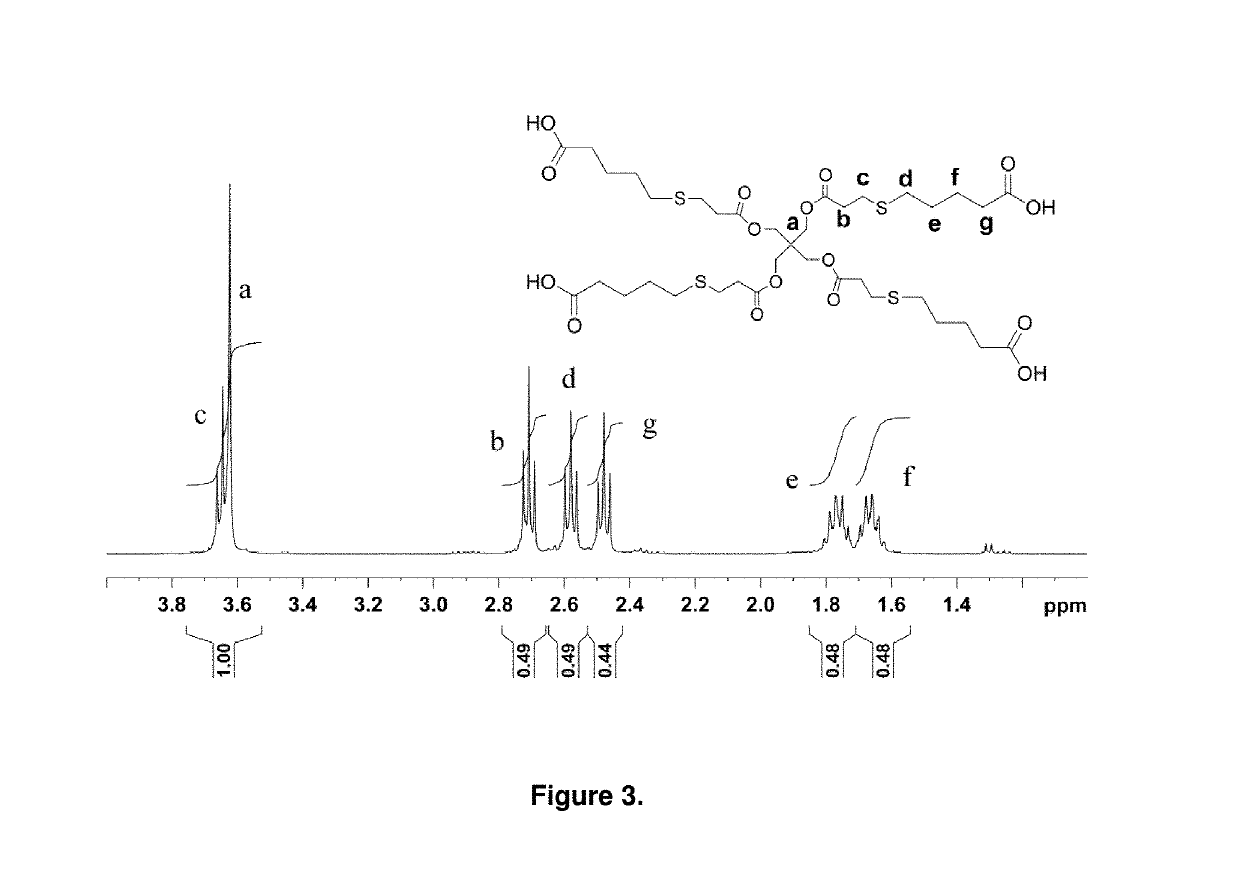Elastomeric and degradable polyanhydride by step-growth thiol-ene photopolymerization
a technology of thiol-ene and photopolymerization, which is applied in the field of producing elastomeric and degradable polyanhydride polymers, can solve the problems of poor biocompatibility, poor elastomer performance, and inability to meet the needs of medical applications, etc., and achieves the effects of improving biocompatibility, hydrophilicity, and hydrophilicity
- Summary
- Abstract
- Description
- Claims
- Application Information
AI Technical Summary
Benefits of technology
Problems solved by technology
Method used
Image
Examples
Embodiment Construction
[0011]In this disclosure, we disclose that thiol-ene chemistry, (See Hoyle, C. E.; Lee, T.; Roper, T. J. Polym. Sci. Part A: Polym. Chem. 2004, 42, 5301-5338; and Reddy, S. K.; Cramer, N. B.; Bowman, C. N. Macromolecules 2006, 39, 3673-3680, all hereby incorporated herein by reference.) a step-growth mechanism of polymerization, can be applied to make materials that are elastomeric, photocurable and have controllable degradation rates, starting from only several hours. The use of alkyne compounds either in conjunction with, or instead of, the alkene compounds is also possible (See Fairbanks, B. D.; Scott, T. F.; Kloxin, C. J.; Anseth, K. S.; Bowman, C. N. Macromolecules 2009, 42, 211-217; such polymerizations will also hereby be included in any reference to thiol-ene polymerizations). The inclusion of an anhydride in one of the thiol-ene monomers is the key degradation functionality, allowing degradation of the crosslinked material to occur through the often-preferred surface degrad...
PUM
| Property | Measurement | Unit |
|---|---|---|
| glass transition temperature | aaaaa | aaaaa |
| glass transition temperature | aaaaa | aaaaa |
| wt. % | aaaaa | aaaaa |
Abstract
Description
Claims
Application Information
 Login to View More
Login to View More - R&D
- Intellectual Property
- Life Sciences
- Materials
- Tech Scout
- Unparalleled Data Quality
- Higher Quality Content
- 60% Fewer Hallucinations
Browse by: Latest US Patents, China's latest patents, Technical Efficacy Thesaurus, Application Domain, Technology Topic, Popular Technical Reports.
© 2025 PatSnap. All rights reserved.Legal|Privacy policy|Modern Slavery Act Transparency Statement|Sitemap|About US| Contact US: help@patsnap.com



